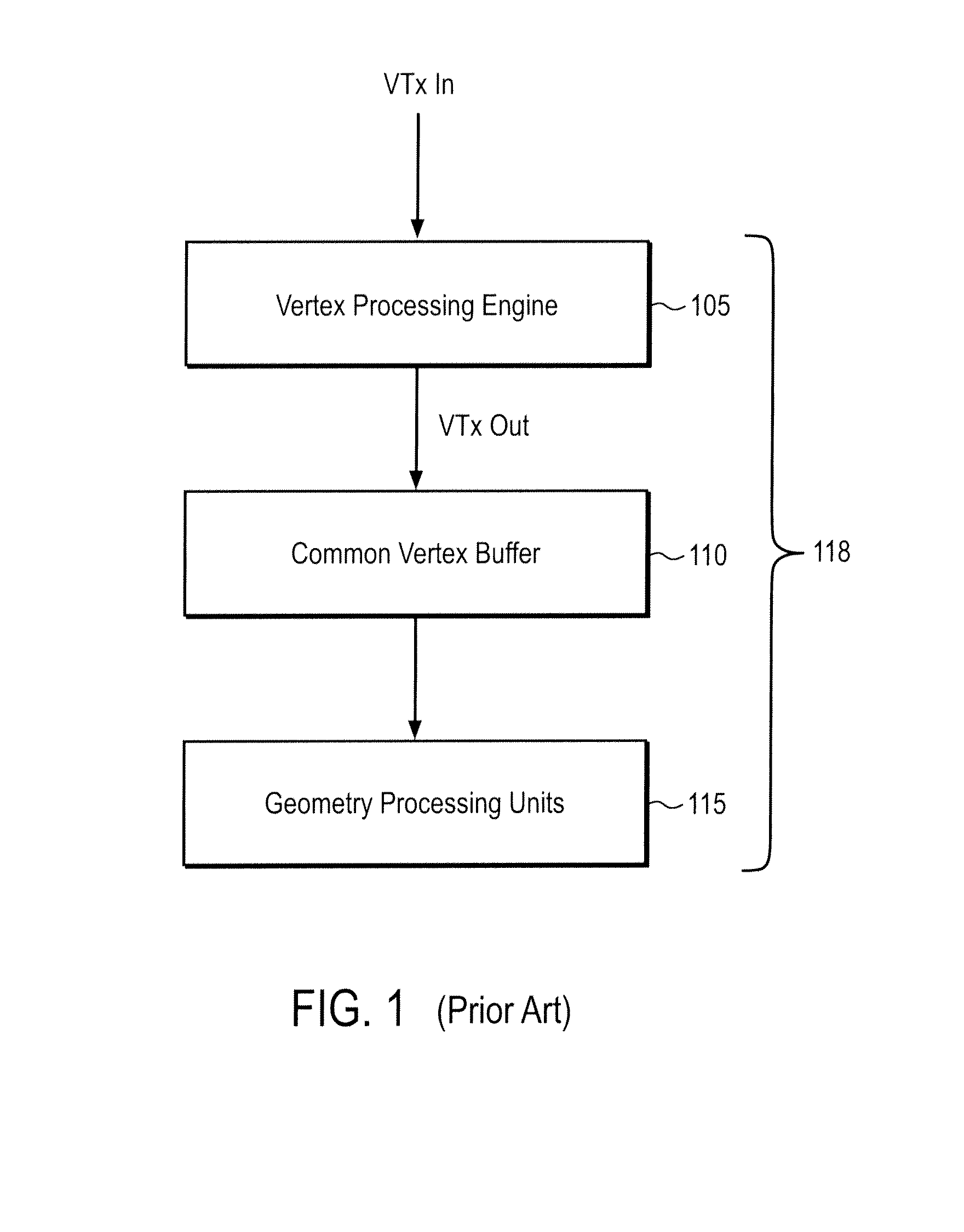Primitive oriented assembly for parallel vertex/geometry processing
a parallel vertex and geometry technology, applied in the field of graphic technology for generating vertex and primitive information in the graphics system, can solve the problems of limited scalability, practical limits on the size of a single v-cache, and problems with scalability
- Summary
- Abstract
- Description
- Claims
- Application Information
AI Technical Summary
Benefits of technology
Problems solved by technology
Method used
Image
Examples
Embodiment Construction
[0015]FIG. 3 illustrates a graphics system 300 in accordance with one embodiment of the present invention. A central processing unit (CPU) 302 is coupled to a graphics processing unit (GPU) 306 by an interface 304 such as a high-speed bus or bridge. In a graphics system, CPU 302 generates commands for the GPU 306 to render pixels for displaying graphical images. A host 308 within GPU 306 acts as an interface with CPU 302 and performs, for example, any necessary translations of abstract graphics commands into a format required by graphics hardware. Host 308 may, for example, receive conventional graphics API calls from CPU 302, such as graphics API calls in accordance with conventional graphics languages for pipelined graphics architectures such as the OpenGL® API.
[0016]A data assembler unit 310 receives a serial stream of vertices and commands from host 308. As an illustrative example, the serial stream may include a “to do” list for a set of vertices and a command indicating operat...
PUM
 Login to View More
Login to View More Abstract
Description
Claims
Application Information
 Login to View More
Login to View More - R&D
- Intellectual Property
- Life Sciences
- Materials
- Tech Scout
- Unparalleled Data Quality
- Higher Quality Content
- 60% Fewer Hallucinations
Browse by: Latest US Patents, China's latest patents, Technical Efficacy Thesaurus, Application Domain, Technology Topic, Popular Technical Reports.
© 2025 PatSnap. All rights reserved.Legal|Privacy policy|Modern Slavery Act Transparency Statement|Sitemap|About US| Contact US: help@patsnap.com



